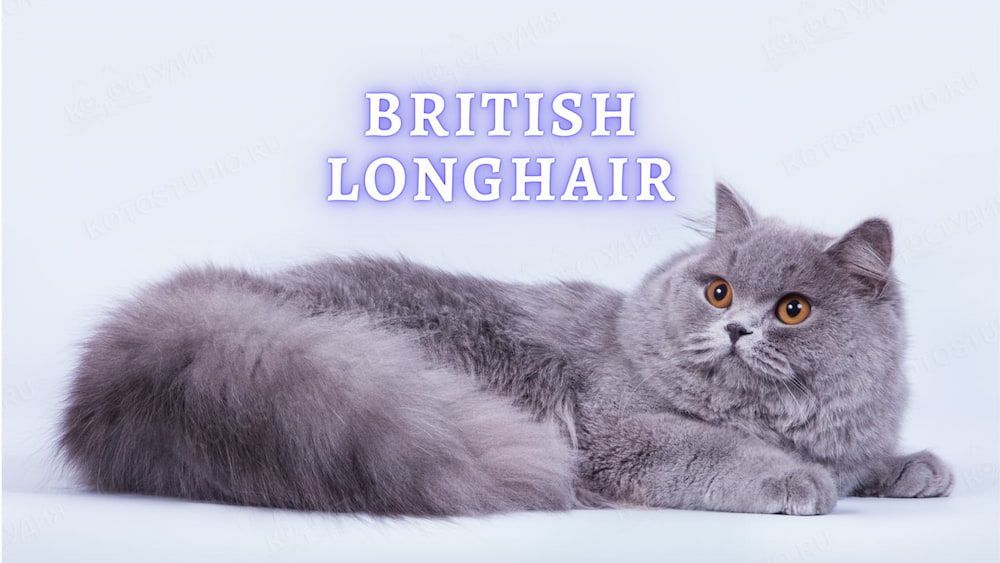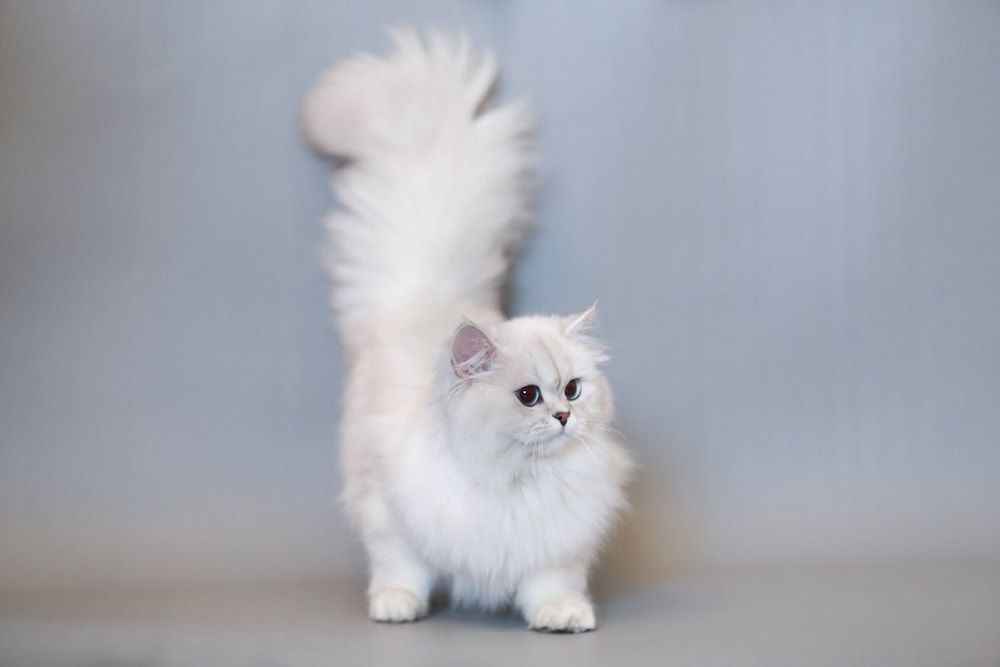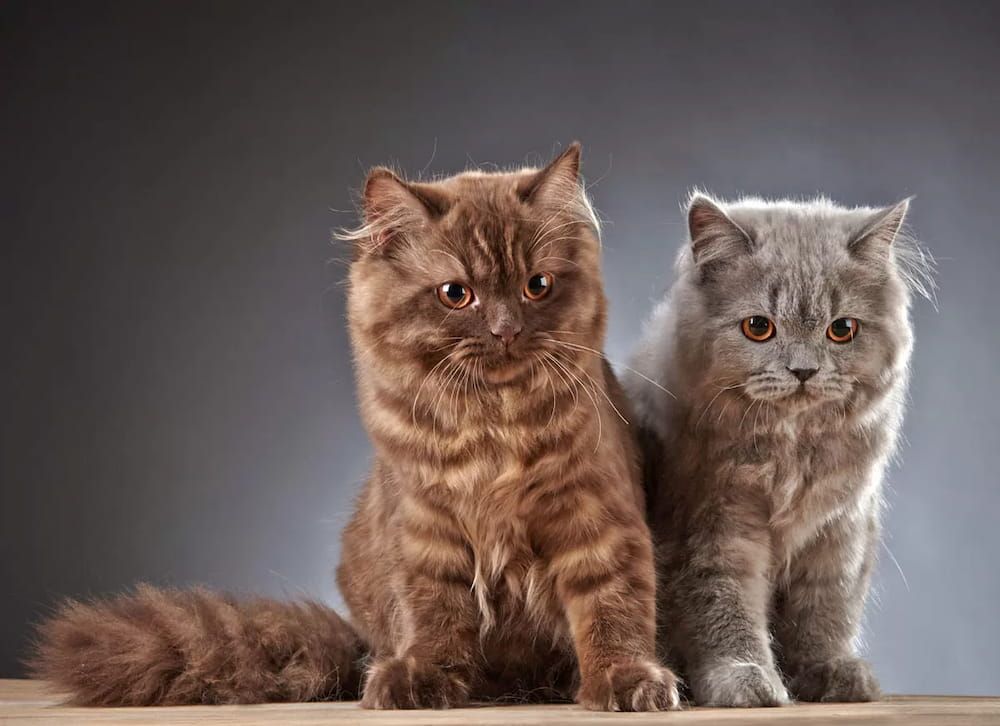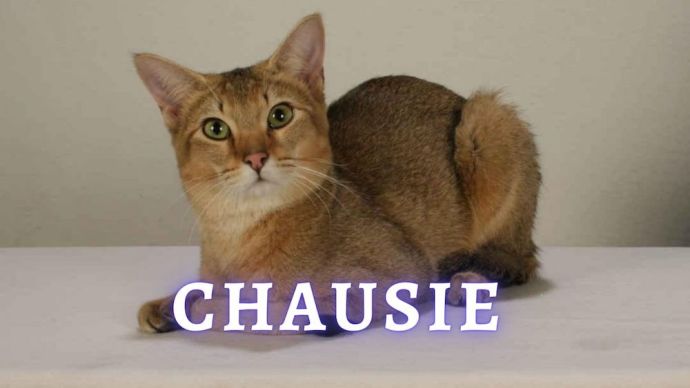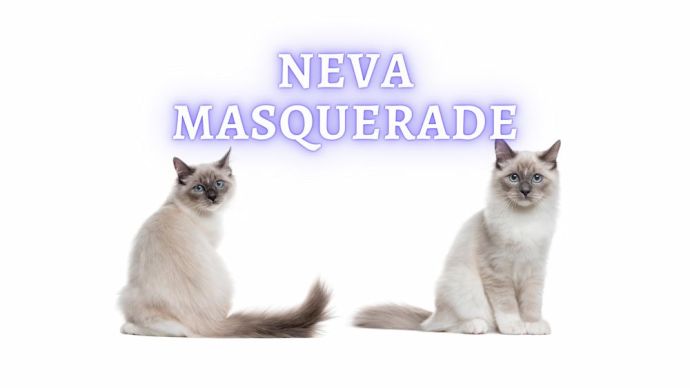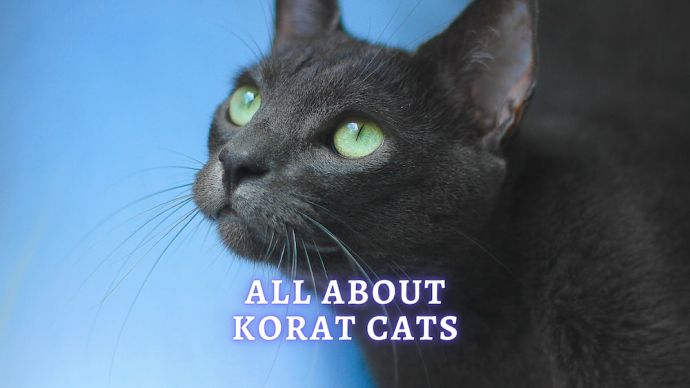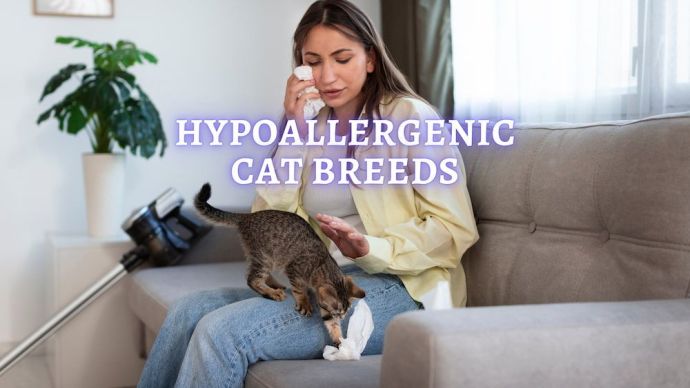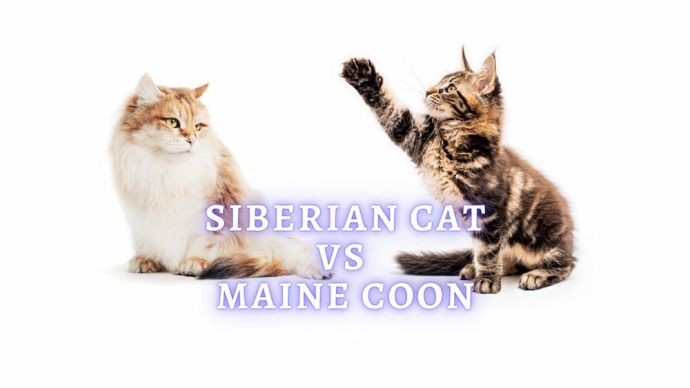British Longhair: Everything You Need to Know About the British Longhair Cat
Written by:
Author: Elle Veranth
A copywriter for articles and blogs about pet care, food, beverage, and business. Has always had a passion for writing and editing, but began taking freelancing seriously fairly recently.
View all 29 articlesLearn about our editorial process and veterinary review board.
Viewed: 2765
Updated on: 09/23/2021
Who has a sweet personality accompanied by an adorable face and calm demeanor to match? The answer is the British Longhair cat. These fluffy felines are easily recognizable by their rounded faces, large eyes, and long fur.
The British Longhair cat is known for being friendly and affectionate to its people, but at the same time, they are not overly needy. They enjoy the company of people and other pets, but they are also okay with being left alone during the day. They are also known for their vocalness and like to “talk” to communicate.
If you are thinking of bringing an affectionate cat into your home, read on to find out if a British Longhair is right for you.
Characteristics of British Longhair Cats
| Weight | 8-16 pounds |
| Height | 12 to 14 inches |
| Colors and Patterns | brown, sable, silver, fawn, blue, lilac, black, white, cream; patterns may be solid, bi-color, or tabby; |
| Lifespan | 12 to 15 years |
| Suitable for | seniors, families with children and other pets, first-time cat owners |
Breed History
As its name suggests, the British Longhair breed originated in Great Britain. They are a cross between a British Shorthair cat and a Persian. [1] Their long, fluffy coat comes from the Persian cat side.
While the British Longhair cat was first introduced in the early 20th century, it only recently became recognized as its breed. Thus, there is not too much detailed information available about their breed history since they are so new. A lot of their history is closely related to the British Shorthair.
People had been breeding British Shorthair cats with Persian cats for quite some time. The offspring that inherited the Persian’s long-haired gene was initially considered to be “unusual.” Despite this once-unfortunate labeling, the British Longhair is now a beloved pet to many.
Interesting Facts About British Longhair Cats
Though much is still being learned about the British Longhair breed, some interesting facts are known.
- First, it was mentioned above that they were only recognized as their individual breed recently, but it was as recent as 2009! The International Cat Association (TICA) finally decided to give the breed independent recognition. [2] However, some other registry organizations still do not consider the British Longhair to be its own breed, but maybe they will someday.
- British Longhairs do share some similarities with their Shorthair family members, but there still are quite a few differences. They do appear to look similar physically; they have similar facial features and grow to be about the same height and weight. The British Longhair, of course, has long fur from their Persian parents.
- British Shorthairs are also known for being more playful and active than Longhairs. The Longhair is perfectly content with just relaxing around the house.
Temperament and Personality
Besides their adorable round faces and gorgeous coats, the British Longhair is known for its sweet and friendly personality. They enjoy the company of their owner and any guests but don’t mind being left alone while they’re at work or out doing social activities.
They also have the tendency to be independent, which may make them appear stubborn. However, just because they like doing activities on their terms does not mean that they don’t love their human. British Longhairs are also known to be very curious. They may explore your closet or watch you while you’re cooking in the kitchen.
The British Longhair is incredibly laidback and an adaptable cat. Some may even describe them as lazy. Like most young animals, they are as playful and energetic as kittens, but they calm down quickly with age. They like to sleep a lot as well. Due to their inactive nature, British Longhairs can gain weight relatively quickly, so it is important to monitor their diet and treat intake.
They are very adaptable to just about any living condition including family life. They can live in an apartment or a smaller space with no troubles. However, what they lack in playfulness, they make up for it with their vocals. These kitties love to have a chat at random, to tell you they’re hungry, or that they want attention. If you have roommates or neighbors within close proximity, this may be not very pleasant to them.
Since British Longhairs are so friendly, they make excellent family pets. They like to cuddle on the couch or in bed, but do not particularly enjoy being picked up and held. If there are young children in your home, it is essential to teach them this. Instead, encourage them to gently pet, cuddle (while sitting down), or play with the cat rather than picking them up. Longhairs also enjoy the presence of other household animals and other cats, so long as they share a similar laidback personality.
| Potential for playfulness | 2 out 5 |
| Activity level | 3 out 5 |
| Friendliness to other pets | 4 out 5 |
| Friendliness to children | 5 out 5 |
| Grooming requirements and shedding | 3 out 5 |
| Need for attention | 3 out 5 |
| Affection toward its owners | 5 out 5 |
| Intelligence | 4 out 5 |
| Independence | 4 out 5 |
Activity
Since British Longhairs are prone to overeating and have a rather sedentary lifestyle, they must get some exercise each day. They are prone to weight gain otherwise.
RELATED: Best Cat Food for Weight Loss (Vet Approved)
As their owner, you should encourage play sessions often since they will not be inclined to do so themselves. You can initiate play by throwing a toy for them and tempt them to chase after it. Playing together is also a great bonding activity.
Teaser toys are excellent for British Longhairs because they may find them more entertaining. You can use a toy mouse on a string that you can move quickly so your British Longhair can try to catch it. Another great idea is a laser pointer pen. Many animals, especially cats, love to chase after this. Just don’t point it at their eyes. They will thank you for the mental stimulation.
A cat tree will encourage a British Longhair to climb while also providing them a place to nap. It is great for them to exercise their muscular legs by jumping and climbing. Once they burn off a few calories, they can curl up for a nap. They may also like a scratching post.
It should be noted that British Longhairs are also very intelligent cats. They can easily be trained to use a litterbox or to perform simple tricks. They will do anything for a treat. Be sure to reward them for good behavior, but don’t overdo it.
Grooming Needs
A British Longhair is a semi-longhaired cat, so their owners will need to maintain grooming. Their longer coat will benefit from daily combing. This should be done with a bristle brush. Their thick undercoat will shed heavily twice per year.
Take your time when brushing them and work in small sections. Frequent brushing, especially for long-haired animals, prevents the matting of their fur. Mats can become problematic if they are not properly taken care of.
The main grooming activity to focus on is brushing. Since British Longhairs, and almost all cats, bathe themselves, this is a task that owners will not have to worry about. Since cats lick themselves to bathe, the British Longhair will swallow a lot of its long hair. Brushing them often helps to trap loose fur that would otherwise end up in your cat’s stomach and exit as a hairball.
British Longhair Kittens
Any kitten is adorable, but British Longhair kittens are even more so. You’ll be mesmerized by their large, round, deep gold eyes! Their long fur engulfs their stocky bodies, making them look like tiny balls of fluff.
The British Longhair is a healthy cat breed overall but can develop some health problems. The most common is polycystic kidney disease. This issue occurs when cysts develop on the kidneys which causes them not to function as well, and eventually, they fail. But, the good news is that there are DNA tests available to help detect this disease ahead of time. [3]
Adoption and Rescue
If you adopt a British Longhair kitten, you will most likely need to do so through a breeder. This cat breed is not very common or well-known and proper breeding is needed to produce a healthy litter.
It is crucial to do extensive research to find a trustworthy and high-quality breeder if you are seeking a distinct breed. Since the British Longhair is a rare cat breed, you may have to do some traveling to go meet the breeder and kittens.
A trustworthy and professional breeder should be completely transparent with you. They should allow you to meet the parents of the British Longhair kitten you will be adopting and see where the cats are kept. Quality breeders should also know how to perform genetic testing accurately and should not be shy about showing you any paperwork.
It is not impossible to potentially find a British Longhair to adopt from your local shelter but is likely very rare. Adopting an already full-grown British Longhair will be much less expensive than purchasing one from breeders.
Catteries
What is a cattery? It is essentially a cat housing unit that comes in various sizes. There are catteries meant for breeding and ones for boarding. If you travel a lot, searching for a place to board your cat might be a good idea.
However, if a cat is not used to being inside a cattery from a young age, they will likely not be fond of it. An enclosed space will be overwhelming for them. Another option is to ask a family member or friend you trust to take care of your cat in your home while away.
Price of A British Longhair
If you purchase your Longhair from a reputable breeder, expect to pay between $800 and $1,200. Their price will depend on their genes. Keep any travel expenses in mind as well if the breeder does not live close to you.
Conclusion
The British Longhair is a sweet cat that is friendly to just about anyone. They are adaptable to a wide variety of people and environments. Their low-maintenance personality makes them the perfect cuddle bug to keep you warm at night.
If you live alone and are looking for a new furry friend, or a new pet to add to a family, then a British Longhair may be just the one for you.
FAQs
How much is a British Longhair?
A British Longhair can cost up to $1,200 if they are from a reputable breeder. If you do get lucky and find one at a shelter, they will cost less.
Are British Longhair cats cuddly?
Yes, they are. These lazy cats love to cuddle next to their people, but do not typically enjoy being picked up and held.
Are British Longhairs rare?
Yes, they tend to be rare. It is not common to see them available for adoption at a shelter.
How long do British Longhair cats live?
They live approximately between 12 and 15 years. Some may even live a bit longer.
Article Sources:
- Abrahamson, Hilary. “British Longhair.” Daily Paws,https://www.dailypaws.com/cats-kittens/cat-breeds/british-longhair.
- “British Longhair Breed.” TICA, 13 Aug. 2018, tica.org/breeds/browse-all-breeds.
- Biller, D. S., et al. “Inheritance of Polycystic Kidney Disease in Persian Cats.” Journal of Heredity, Oxford Academic, academic.oup.com/jhered/article/87/1/1/790902.
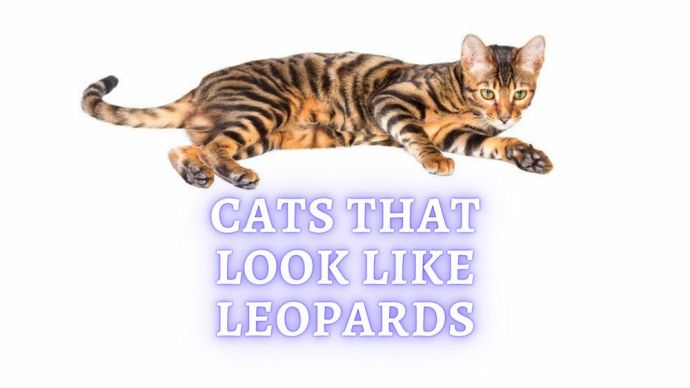 Cat Breeds Cats That Look Like Leopards: 10 Cat Breeds That Look Exactly Like Leopards
Cat Breeds Cats That Look Like Leopards: 10 Cat Breeds That Look Exactly Like Leopards - 331
- 0
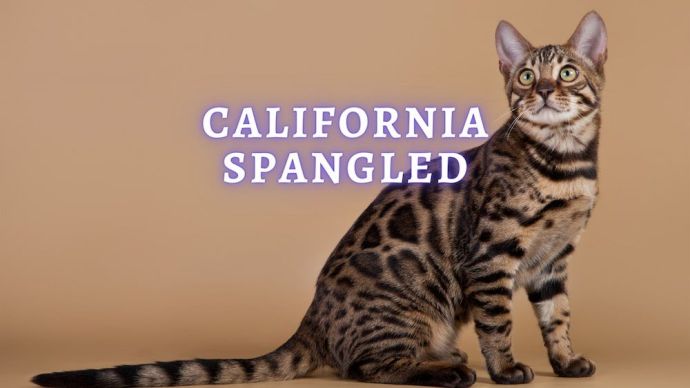 Cat Breeds California Spangled: California Spangled Cat Personality, Breed History, and Interesting Facts
Cat Breeds California Spangled: California Spangled Cat Personality, Breed History, and Interesting Facts - 271
- 0
 Cat Care Why Does My Cat Attack My Legs? 10 Reasons Why and What To Do About It (Vet-Approved Advice)
Cat Care Why Does My Cat Attack My Legs? 10 Reasons Why and What To Do About It (Vet-Approved Advice) - 45568
- 21
 Cat Veterinary Tips Cat Stomach Gurgling: Vet Advice on Why is Your Cat Stomach Gurgling?
Cat Veterinary Tips Cat Stomach Gurgling: Vet Advice on Why is Your Cat Stomach Gurgling? - 35343
- 4
 Cat Veterinary Tips My Cat Lost its Voice: Can Cats get Laryngitis? (Vet Advice)
Cat Veterinary Tips My Cat Lost its Voice: Can Cats get Laryngitis? (Vet Advice) - 23247
- 13









